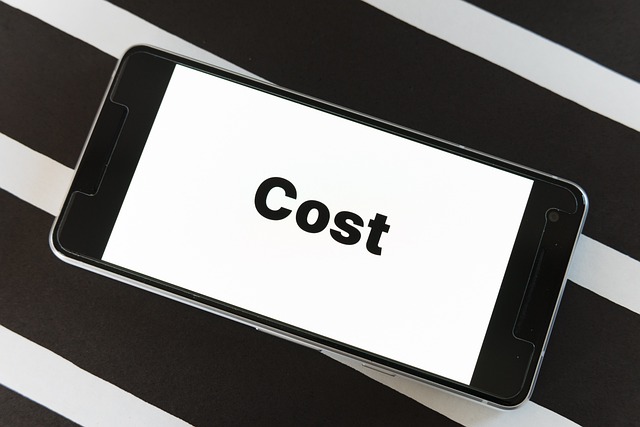Semaglutide patient assistance programs (PAPs) play a vital role in addressing the financial barriers that prevent eligible individuals from accessing this revolutionary type 2 diabetes treatment. These programs offer co-pay relief, rebates, and savings cards to make semaglutide more affordable, enhancing glycemic control and overall health outcomes. Navigating these programs requires understanding eligibility criteria, gathering necessary documentation, and persevering through potentially complex application processes. By dispelling myths and increasing awareness, PAPs can ensure a wider range of patients benefit from this life-changing medication. Future prospects include improved accessibility through digital platforms, telemedicine, and innovative partnerships, ultimately aiming to lower costs globally.
“Semaglutide, a groundbreaking glucagon-like peptide receptor agonist (GLP-1RA), has shown remarkable efficacy in treating type 2 diabetes. However, the rising cost of semaglutide poses a significant barrier to patient access. This article explores patient assistance programs designed to mitigate these financial hurdles. We delve into the affordability landscape, eligibility criteria, application processes, and successful case studies. By understanding these resources, patients can navigate the complexities of funding their Semaglutide treatment, ensuring better access and improved health outcomes.”
Understanding Semaglutide: A Glucagon-Like Peptide Receptor Agonist

Semaglutide is a groundbreaking medication that has transformed diabetes management, particularly for those with type 2 diabetes. It belongs to a class of drugs known as glucagon-like peptide-1 (GLP-1) receptor agonists. This synthetic hormone mimics the effects of a natural substance produced in the gut after eating, stimulating insulin release and suppressing glucagon secretion. By doing so, it helps lower blood sugar levels and improve overall glycemic control.
The affordability of semaglutide is a significant concern for many patients, as its cost can be substantial, especially when compared to other diabetes treatments. Patient assistance programs have emerged as valuable tools to address this financial barrier. These programs offer various support options, including subsidies, copayment assistance, and medication access programs, aimed at making semaglutide more affordable or even free for eligible patients. Understanding these programs is crucial for ensuring that individuals with type 2 diabetes can access the treatment they need without the added worry of high costs.
The Rising Cost of Semaglutide: A Growing Concern for Patients

The rising cost of semaglutide has become a growing concern for patients worldwide, especially those relying on this medication for managing type 2 diabetes. Semaglutide, a glucagon-like peptide-1 (GLP-1) receptor agonist, has shown significant promise in improving glycemic control and reducing weight among diabetic individuals. However, the high cost associated with this injectable drug can be a significant barrier to access, particularly for uninsured or underinsured patients. This financial burden raises questions about equitable healthcare access and the affordability of essential medications.
As the price of semaglutide continues to rise, ensuring patient assistance programs becomes increasingly vital. These programs aim to support patients in affording their necessary treatments, including semaglutide, by offering various forms of aid such as co-payment assistance, rebate programs, or patient savings cards. By implementing these initiatives, healthcare providers and pharmaceutical companies can help alleviate the financial strain on patients, making this life-changing medication more accessible and ultimately improving diabetes management outcomes.
Patient Assistance Programs: An Overview and Their Role in Affordability

Patient Assistance Programs (PAPs) play a pivotal role in enhancing medication accessibility, especially for individuals facing financial barriers to afford essential treatments like semaglutide. These programs, often initiated by pharmaceutical companies or non-profit organizations, are designed to provide support for patients who struggle with the cost of semaglutide. They offer various forms of assistance, including direct financial aid, co-pay support, and copayment reductions or waivers, making it easier for patients to adhere to their prescribed regimens.
By alleviating economic burdens, PAPs encourage patient compliance and improved health outcomes. This is particularly crucial for semaglutide, a medication used in the management of type 2 diabetes, where consistent use can lead to significant glycemic control. With the increasing importance of affordable healthcare, these programs have become a vital component in ensuring that patients receive necessary treatments without facing financial hardships.
Who Qualifies for Semaglutide Patient Assistance?

Semaglutide patient assistance programs are designed to help individuals navigate the often high cost of this innovative diabetes treatment. To qualify for these programs, patients typically need to meet specific criteria related to their financial situation and medical history. Those with limited income, who lack adequate insurance coverage, or who face significant out-of-pocket expenses for semaglutide prescriptions may be eligible.
Program eligibility often considers factors such as household income, family size, and existing health conditions. Some programs cater specifically to low-income individuals, while others focus on those whose insurance does not fully cover the cost of semaglutide. By providing financial assistance, these initiatives aim to make this life-changing medication more accessible to a broader range of patients, ensuring that cost doesn’t become a barrier to effective diabetes management.
Navigating Application Processes for Semaglutide Financial Aid

Navigating the application processes for Semaglutide financial aid can seem daunting, especially considering the varying requirements among different patient assistance programs. The first step is to research and identify reputable organizations offering aid for the cost of Semaglutide. These programs often require detailed information about your financial situation, including proof of income and medical expenses. Some might mandate you to have reached a certain stage in your treatment or have specific health conditions.
Applying typically involves filling out online forms, submitting required documents, and sometimes providing additional details about your healthcare team’s involvement. Ensure each application is completed accurately and thoroughly to avoid delays. Remember, patience and persistence are key when navigating these processes, as securing financial aid can significantly alleviate the burden of managing the cost of Semaglutide.
Different Types of Patient Assistance for Semaglutide Treatment

Patient assistance programs play a crucial role in making semaglutide, a potent weight management medication, more accessible and affordable for those in need. These programs are designed to help patients navigate the often intricate process of obtaining their prescribed medications while managing the associated costs. The availability of various patient assistance options ensures that individuals facing financial barriers can still access this life-changing treatment.
There are several types of patient assistance specifically tailored for semaglutide users, each offering unique benefits. Some programs provide direct financial support to cover a portion or all of the cost of semaglutide, making it more affordable for eligible patients. Others offer copayment assistance, which helps offset the out-of-pocket expenses associated with the medication. Additionally, patient advocacy groups and non-profit organizations often collaborate to create initiatives that facilitate access to semaglutide, ensuring patients can receive the treatment they require without the added strain of high costs.
Case Studies: Successful Patient Stories Through Assistance Programs

Many patient assistance programs have been instrumental in improving access to semaglutide by addressing the significant cost of semaglutide. These initiatives often provide financial support, co-pay assistance, or free medication for those who qualify, based on income and medical need. Through these programs, patients with type 2 diabetes have reported improved glycemic control and better overall health outcomes.
Case studies highlight the success of such programs in transforming lives. For instance, a patient struggling to afford their medication due to high co-pays was able to receive semaglutide through an assistance program, leading to a notable reduction in HbA1c levels and an improved quality of life. Similar stories are prevalent, showcasing how these initiatives bridge the gap between patients and essential treatments, ensuring better diabetes management and enhanced well-being.
Common Challenges and Misconceptions About Patient Assistance

Many patients and healthcare providers face challenges when it comes to affording semaglutide, a medication that has shown significant promise in managing type 2 diabetes. One common misconception is that patient assistance programs are only for those with low incomes or limited insurance coverage. However, these programs are designed to help a broader range of individuals who may struggle with the cost of semaglutide, regardless of their financial status. Another challenge is awareness; many patients are unaware of the availability and accessibility of such assistance.
Patient assistance programs often require careful navigation, which can be a barrier in itself. Misconceptions about eligibility criteria or application processes might discourage eligible individuals from applying. It’s crucial to dispel these myths and ensure that those who can benefit from semaglutide assistance understand their options and take advantage of them to improve their diabetes management and overall well-being.
The Future of Semaglutide Affordability: Innovations and Opportunities

The future of semaglutide affordability looks promising, with several innovations and opportunities on the horizon. Patient assistance programs are already playing a significant role in making this medication more accessible, but ongoing efforts aim to go even further. These include partnerships between pharmaceutical companies, healthcare providers, and government bodies to develop creative funding models and insurance coverage options. By streamlining these processes, many patients can now afford semaglutide, which offers life-changing benefits for managing type 2 diabetes and potentially reducing cardiovascular risks.
Technological advancements are also driving down the cost of semaglutide. Digital health platforms and telemedicine services make it easier for patients to access healthcare professionals, receive prescriptions, and monitor their treatments remotely. This not only improves accessibility but also reduces unnecessary expenses associated with in-person visits. Moreover, as research continues to uncover more about semaglutide’s long-term benefits, increased demand could lead to more competitive pricing, making it an even more viable option for patients worldwide.
